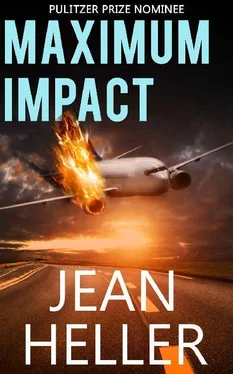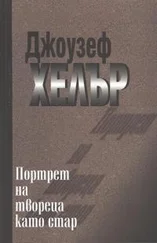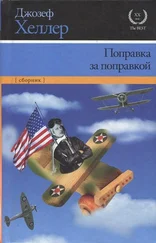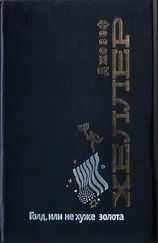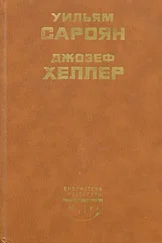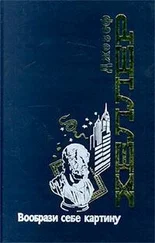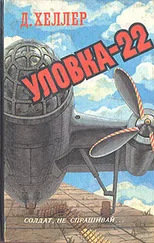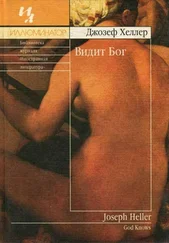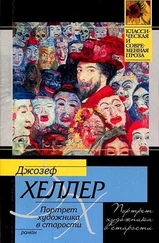Tuesday, May 20th, 10:32 A.M.
Pace would always remember this morning because it was the day everything hit the fan and sprayed in all directions. It was as Avery Schaeffer had predicted. When the story broke, it cracked in places he hadn’t imagined. Everyone wanted an investigation. There were inquiries at the NTSB, of course, but also at the Justice Department and within one federal and one state grand jury. The Transportation Committees in both the House and the Senate were making noises about hearings, and there were calls from Hill Democrats for a Senate Ethics Committee examination of the involvement of Harold Marshall. In addition, the Securities and Exchange Commission announced it was looking at the trading of Converse shares on the New York Stock Exchange. A lot of reporters were getting bits of the story, but Pace still had the hottest piece.
Television news and every major newspaper in the country led with the amazing disclosure that the NTSB was now treating the bird-strike theory as a botched attempt to cover up the real reason for the ConPac crash. Wister decided the night before that Pace’s two big stories should be separate, and they made one beautiful package. The page-one headline was a rare two-line banner:
NTSB suspects cover-up in ConPac accident;
Grand juries probe deaths of investigators, reporter
The press-conference story ran down the right side of the page; the grand-jury story down the left. Both carried Pace’s byline. He stashed a dozen extra copies of the front section in his desk to add to his clip file. He didn’t have many days this good.
If the grand-jury story staggered Chronicle competitors, it also staggered Stanley Eastman Travis III, United States attorney for the District of Columbia. He had stormed into the newsroom half an hour earlier, and Pace could see him engaged in heated discussion with Avery Schaeffer in Schaeffer’s office with the door closed. Travis was steamed about the Chronicle story on the grand juries. When Pace called him the night before, he adamantly refused to discuss anything—not even to confirm or deny that an investigation was in progress.
When Travis left a few minutes later, he looked as indomitable as when he came in. Schaeffer didn’t come out to report on the meeting so Pace supposed it wasn’t of consequence to him although he was powerfully curious.
Given Travis’s attitude, Martin Lanier wasn’t likely to give up much information connected with the federal investigation, and Pace suspected Helm would say nothing about the Virginia grand jury.
He called Maryland DMV about the license-plate number Jill Hughes had taken from the blue van on Capitol Hill. The vehicle was registered to Eugene Tolliver of Baltimore. When a reporter from the Baltimore bureau checked the address, he found it was a vacant lot. He also could find no living Eugene Tollivers in Baltimore. One in Lanham was too poor to own a Ford van, another in Chaptico had moved there only a week earlier from West Virginia and drove a Toyota Tercel, and one in Frederick owned a van, a brown Plymouth Voyager, and his neighbors said they’d never seen him with a blue Ford of any body type. Hours of work produced only the certain knowledge that the two men seen in the blue Ford van were professional muscle who didn’t use their real names.
On the Hill, fully seven committees of the House and Senate were considering different angles of pursuit. Jill Hughes and Glenn Brennan were juggling those. Someone had to check the annual financial-disclosure records all members of the Congress and their top aides must file each May. If Marshall had a personal stake in Converse, financial statements at the Secretary of the Senate’s office were the public documents in which that interest would show up. Pace called the Senate Press Gallery to tell Jill and Glenn he would check the records that afternoon. When they didn’t answer his page, he left a message.
* * *
It was some time before Jill Hughes got Pace’s message because she was staked out in a hallway of the Hart Building, outside the closed doors of the Senate Select Committee on Ethics, waiting for word on whether there would be an investigation into the bizarre behavior of Ohio’s senior senator, Harold Marshall.
At the same time, Marshall and Senator Garrison Helmutsen were meeting in the Minnesota Democrat’s office in the Russell Building to hash over Marshall’s demand for an investigation of Ken Sachs’s links to MacPhearson-Paige. Glenn Brennan had that one covered. He was stationed across the hall from Helmutsen’s office, at a point where he could watch all the exits—in case Marshall tried to get away without confronting the army of journalists waiting to intercept him. Two hours into the watch, the senator emerged.
“I have no comment on anything,” he said, trying to push his way through the crowd.
“Senator, will the committee hold a hearing?” someone asked.
“I suspect the committee eventually will hold a hearing on something,” Marshall snapped. “Most committees do.”
“Will there be an investigation of Ken Sachs?” another pressed.
“I’m not the chairman anymore. You’ll have to ask him.”
“Are you and the chairman at odds over this?” Brennan asked, pressing his way to Marshall’s side as the senator tried to move up the hallway, surrounded by journalists as tightly as a shell encases a walnut.
Marshall looked sharply at Brennan. “Over what could we possibly be at odds?”
“Over Ken Sachs’s handling of the ConPac investigation,” Brennan clarified.
Marshall stopped and looked down to the point on Brennan’s chest where his press IDs hung from a chain around his neck. Marshall frowned and squinted at the ID, then pressed the bridge of his nose between his thumb and first finger. Brennan thought he saw him sway.
“You’re from the Chronicle?’ Marshall asked.
“Yes, sir. Glenn Brennan.”
Marshall’s hand dropped from his face. “Get out of my way,” he snarled. “I have nothing to say to you or to anyone else from that scandal sheet.” He looked away and then turned back. “Did you people ever think about selling your product at supermarket checkout stands? That’s where it belongs.”
“Regardless of how you feel about the Chronicle, we’re all here for an answer to the same question, sir. Will there be an investigation of Ken Sachs?” Brennan was trying hard to be polite and not let Marshall’s insults provoke him. They stood toe to toe.
“Get out of my way,” Marshall hissed. “Get out of this hallway. Now!”
“Senator, with all due respect, this is a public hallway. I have every right to be here.”
Marshall’s face went scarlet, and the rest of the journalists grew silent. They sensed that Marshall was about to lose it unless he got himself under control and backed away from the confrontation he’d created. But backing away was not the style for which he was infamous. Around him, Brennan could hear the whirring of motor drives. He was certain the TV video cameras were rolling, too, but he didn’t want to break eye contact with Marshall long enough to look for them. He was willing to choke back his contempt for the man he faced, but his Irish temperament wouldn’t let him blink first.
In a low voice filled with rage, Marshall asked, “Do you want me to call the Capitol Police and have you forcibly ejected?”
“No, I don’t, Senator,” Brennan replied evenly. “Even if you called them, I don’t think they’d have grounds to throw me out. I’m not creating a nuisance or a hazard.”
“Well, what in hell do you call this?” Marshall thundered. Without taking his eyes off Brennan, he waved his right hand out expansively, meaning to underscore the huge crowd around them. But he miscalculated how closely the others had moved in, and his hand hit a camera and the side of the head of the Reuters photographer using it. The blow carried enough force to knock the camera to the floor and the photographer back into colleagues, who reached out to support him.
Читать дальше
